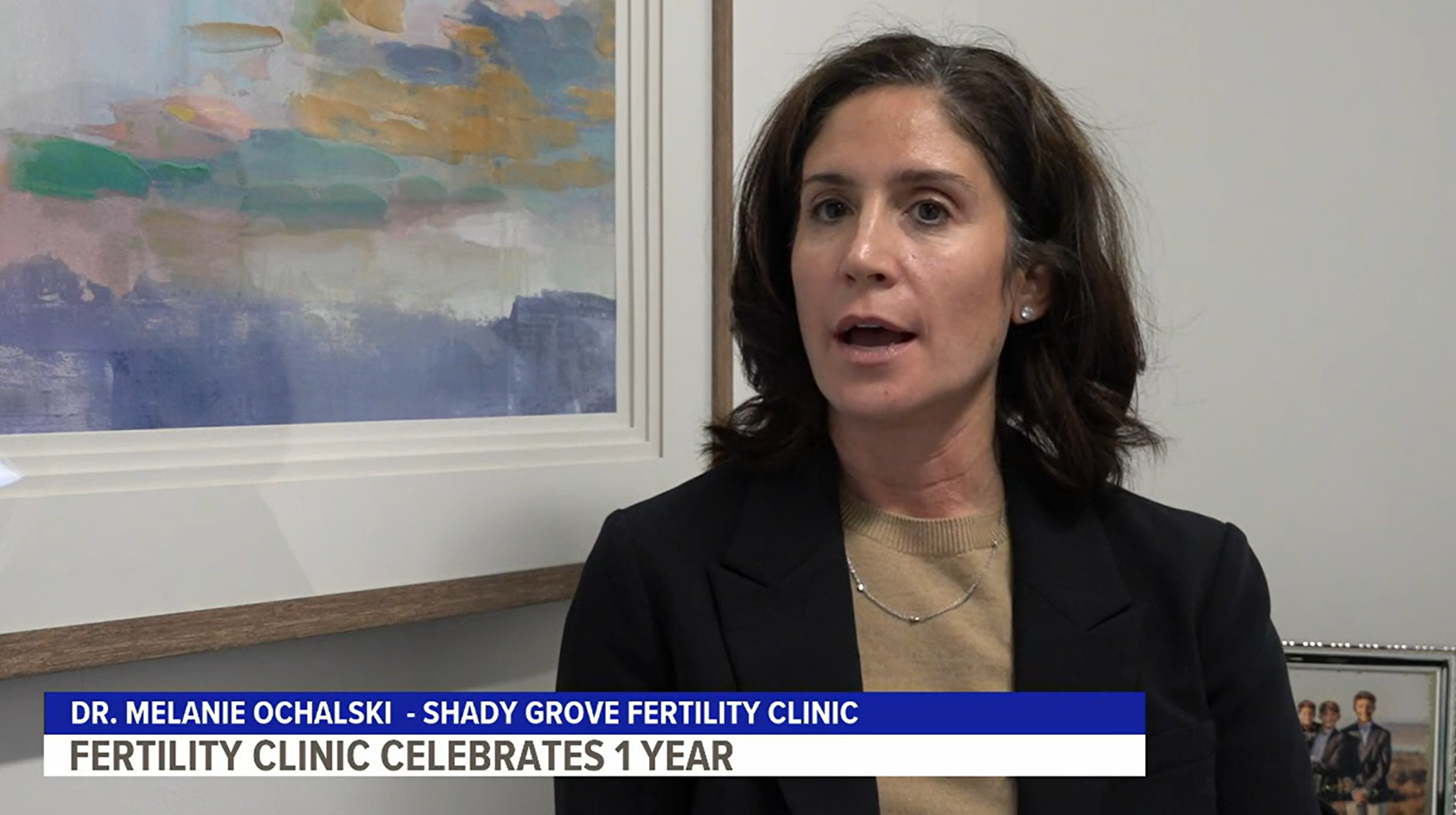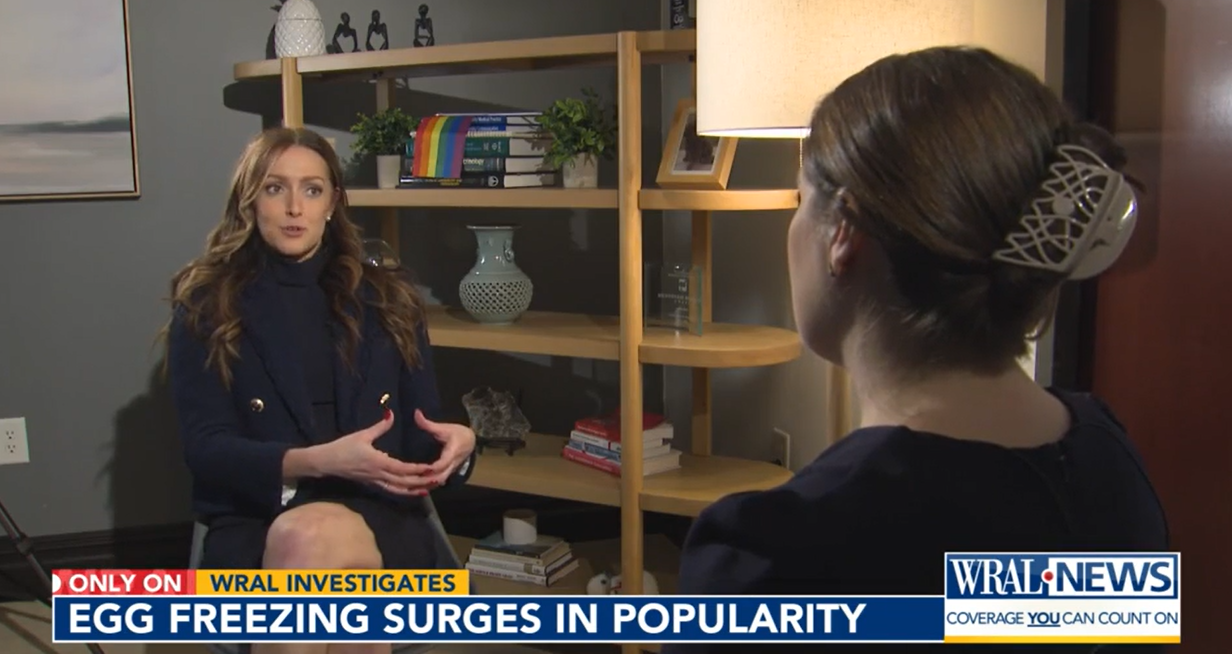From the beginning, Tracy and Scott had known they always wanted to have a big family. So even though many of their peers were putting it off, they started trying to get pregnant as soon as they were married. They were young and healthy, so it never occurred to them that they might need help with something that seemed to come so easily to everyone around them.
Three years and many, tough decisions later, they gave birth to a beautiful baby boy named Aaron, who is the center of their universe.
Their story shows how the knowledge gained from each treatment cycle, even those that failed, kept them moving in the right direction when they could have quit altogether. Their perseverance, combined with the expertise and support of their medical team, turned their dreams of a family into a reality.
Round One
After a year of trying to get pregnant on her own, Tracy started troubleshooting with her Ob/Gyn. “My doctor did some preliminary fertility tests and recommended that we try Clomid,” Tracy recalls. Clomid is an oral medication that is widely used to produce an ovarian follicle containing an egg. Clomid acts by blocking the action of estrogen in the brain. As a result, there is an increased production of follicle stimulating hormone (FSH) causing the development of one or more follicles.
Tracy took Clomid for three months in a row but did not get pregnant. “On my third month of Clomid, my doctor did an ultrasound to see how many egg follicles I was producing,” Tracy says. Unfortunately, what they saw, despite the medication, she didn’t have any follicles growing at all.
This was difficult news for Tracy, who had been hopeful about the Clomid treatment. “I thought we would do one round of Clomid and be pregnant with twins,” jokes Tracy. It was then that Tracy’s doctor suggested that she and Scott see a fertility specialist at Shady Grove Fertility.
A Low Tech Start
Tracy and Scott made an appointment with Dr. Osheroff in Shady Grove Fertility’s Columbia, Maryland office. Dr. Osheroff started their care by ordering a semen analysis for Scott and updating her day 3 blood work.
The testing revealed that Tracy had Polycystic Ovarian Syndrome, or PCOS, a common ovulatory disorder in women of reproductive age. Dr. Osheroff suggested that because Tracy was so young, in her late 20s, she try a drug treatment for PCOS called Metformin, a drug that helps decrease glucose production and make the body more sensitive to insulin thus leading to more regular ovulation, before moving to a higher tech treatment like IUI or IVF. Studies have shown that the use of Clomid and Metformin together can help increase the live birth rates by as much as 4%. Tracy remembers, “I was relieved to have a diagnosis, something we could point to and work on.”
Tracy took oral medications for a few months but still failed to become pregnant. Dr. Osheroff explained that since she had tried treatment with both Clomid and Metformin without success, it was time to move on to a more progressive treatment like IUI. “I was frustrated and worried,” she says, “but Dr. Osheroff reassured me that we still had plenty of treatment options left and that Shady Grove would take a stepped care approach to our treatment.”
The First Major Hurdle
At Dr. Osheroff’s recommendation, Tracy and Scott decided to start Intrauterine Insemination or IUI which helps to place the sperm closer to the egg to help increase the changes of conception. After nearly a year of trying medication treatments, Tracy was excited to undergo a treatment option with a higher rate of success.
Her biggest apprehension was the hormone injections, frequently used to help facilitate follicle production when Clomid alone doesn’t work, she would have to give herself throughout the stimulation phase of her treatment cycle. “Back when we were still just trying on our own, I kept thinking, oh my god, if I have to do fertility treatment, I’ll never be able to give myself injections.”
Tracy attended the Shady Grove Fertility injection class and proved to herself that she was stronger than she knew. She did fine with the injections but then she ran into an unexpected problem.
Tracy’s body was responding too quickly to the medications and her estrogen levels became too high. “Only a few days in, I got a call from my nurse saying that I have to stop my injections.” Unfortunately, her cycle had to be cancelled to avoid ovarian hyperstimulation, which can be common in PCOS patients.
After the frustration of nearly two years of trying to get pregnant, this setback was emotionally difficult for Tracy. “Having this cycle cancelled, due to my high response to the medication was the hardest part of my entire treatment. We had already been trying for so long and to have another month go by was such an emotional let-down.” Tracy and Scott felt like they were not making any progress.
She and Scott wanted to keep trying but now they worried they wouldn’t be able to even complete a cycle, much less get pregnant from it. It was Dr. Osheroff’s expertise and encouragement that helped them continue.
“Dr. Osheroff explained from the very start that we could do another cycle of IUI but make changes that would help us complete the cycle,” says Tracy. “He said we would lower the dosing on my medications and increase the monitoring so that we would be able to avoid the possibility of hyper stimulation on the second try.”
Being able to make these changes eased their fears and so did Dr. Osheroff’s words of hope. Tracy recalls, “He said: ‘you are young and you are healthy. There’s no reason treatment can’t work for you.’ I trusted what he was saying, so it made me feel it was worth it to keep trying.”
The Second Major Hurdle
With the changes they made, Tracy was able to complete two rounds of IUI, but neither resulted in a pregnancy. She and Scott were scared to take the next step to doing IVF. “We thought of IVF as a whole different world. I would need time off for the egg retrieval and embryo transfer. It just felt like a really big decision.”
They met with their physician to get his thoughts. Tracy says, “He said he would support us 100% regardless of what we decided, but he wanted us to have all the information about how IVF would be different from the previous treatments we had gone through.”
Dr. Osheroff explained that, with IVF, they would have more control of the fertilization process. They would see the embryos develop, and it might give them insight into why their previous treatments hadn’t worked. He also reassured Tracy that they would use the knowledge they had gained from her IUI cycles. They would choose a right medication dosage for high responders, and they would continue to do extensive monitoring of her cycle. “I finally felt comfortable with moving to IVF,” says Tracy. “I trusted my doctor, and that’s what allowed me to accept the new path we were on.”
Persevering with Support
Ultimately, Tracy would do two rounds of IVF and one Frozen Embryo Transfer before becoming pregnant. She says that what helped her get through the process was her own drive to become a mother and the support she received from her medical team.
“I always tell people that the thing I loved most about Shady Grove Fertility was the personal attention I got. When Dr. Osheroff would call me, I would feel like I was his only patient,” says Tracy. “And my nurse, was so encouraging. I was anxious every time she called me that something would be wrong with my cycle, but she always put me at ease. She answered all my questions and really helped me to be positive about the experience.”
Getting both the information and the emotional support she needed made the difference for Tracy. She was able to complete her treatment with a wonderful perspective. “I never looked at the failed cycles as anyone’s fault,” she says. “I just thought that my body is different and my treatment needs to be changed to what’s happening with me. I sometimes asked, ‘Why me?’ but I knew that I just had to keep moving forward.”
Getting the Good News
When Dr. Osheroff called her at work, Tracy couldn’t tell from his voice whether the news was good or bad, “He’s such an even-keeled person; I wasn’t sure what he was going to say.” But the news was good. She was finally pregnant.
Tracy remembers, “I called Scott and we were both crying on the phone when my call- waiting beeped and it was my nurse, calling to congratulate me too. It was like she had become one of my girlfriends.”
Her advice to other couples in treatment is to stay focused on the end result. “Remember why you started this in the first place and trust the experts to guide you there.”
Tracy says motherhood is even better than she could have imagined. “It took me several years to get pregnant, nine months to give birth and a split-second to fall in love with my son. Even with everything I went through, I would do it again in a heartbeat.”





